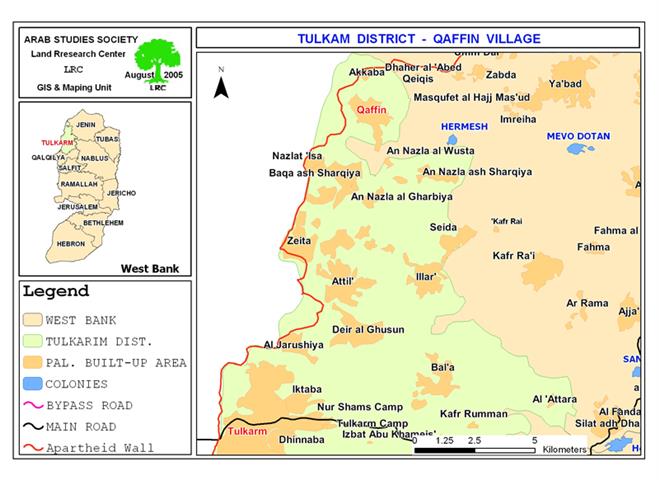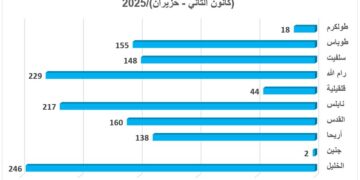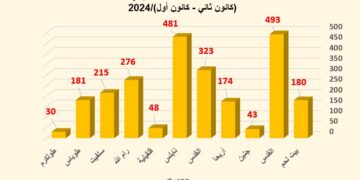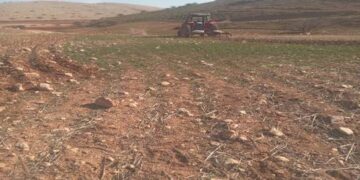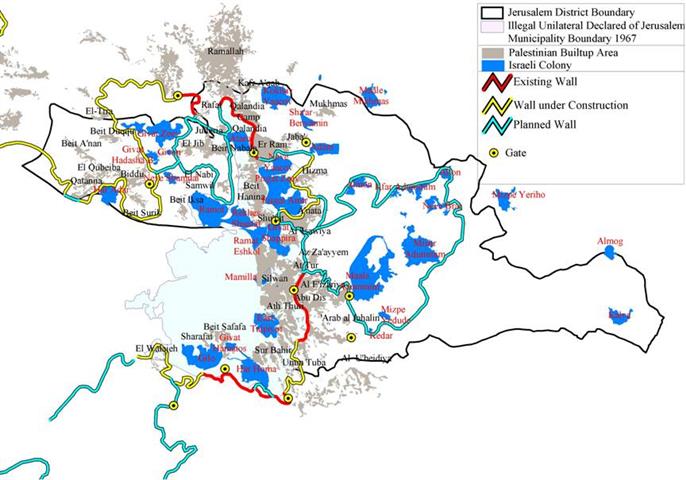Location, population and area
The two villages of Qaffin and Akkaba are located to the north of Tulkarem city, 22 and 23 km respectively. Qaffin has the population of 9000 citizens, while Akkaba's population is 600. 80% of citizens depend on labor market and agriculture as a main of income. The remaining 20 % work in public and private sectors. See Map 1

(Map 1: location of Qaffin and Akkaba))
Qaffin's village area before the 1948 war was 22000 dunums; out of which, 12000 dunums were lost during the war. More than 300 dunums were seized after 1967 war for the expansion of Hermesh settlement which was established in the year 1982 and had, according to the census of 2003, the population of 229 settlers (Foundation for Middle East Peace). The total remaining land for the village is only 7414 dunums, including 1650 for the built up area. As for Akkaba village, the total area is 2920 dunums, out of which 200 dunums are for the built up area.
area before the 1948 war was 22000 dunums; out of which, 12000 dunums were lost during the war. More than 300 dunums were seized after 1967 war for the expansion of Hermesh settlement which was established in the year 1982 and had, according to the census of 2003, the population of 229 settlers The total remaining land for the village is only 7414 dunums, including 1650 for the built up area. village, the total area is 2920 dunums, out of which 200 dunums are for the built up area.
Almost 5500 dunums of Qaffin's lands and 1100 dunums of Akkaba village lands were either devastated under the route of the Wall or separated behind it. Access to the lands is very limited through the only Wall gate (Gate number 12) established by the Israeli army following the construction of the Segregation Wall. The gate is subjected to complicated Israeli security measures and checks. Because of this, most Palestinian farmers from Qaffin and Akkaba are obliged to travel 20 km northward to reach gate number 5 in Barta'a, a time-consuming and difficult trip that causes delays and hardship to farmers.
The Israeli army procrastinates the issuance of passing permits to Palestinian farmers intending to enter their separated lands. For example, only 370 permits have been given to Qaffin farmers out of 1500 applications.
Qaffin village council has appealed to the Israeli high court to open another Wall gate in the village land. At the beginning of March, 2003, the high court decided to open a gate, but there has been no enforcement of law on the ground.
Scorch attacks
Since May 2005, the Israeli army along with Israeli settlers have embarked on a series of wide scale scorch attacks against the separated lands of Qaffin and Akkaba setting fire into almost 4900 dunums of agricultural lands and burning about 36000 trees, 80% of which are long-lived olive trees and 20% are almond trees.
The attacks were carried out as followed:
1. On May 20th, 2005: 1200 dunums were burned;
2. On June 17th, 2005: 1500 dunums were burned;
3. On July 23rd, 2005: 1000 dunums were burned;
4. On July 25, 2005: 1200 dunums were burned.
Eye witnesses from the anti Wall popular committees in Qaffin and Akkaba held the Israeli army and settlers the responsibility for the vandalism. They clarified that on Sunday, July 24th, 2005, there was heavy army and settlers' presence at the scene of fire before its break out. Five minutes following their departure, smoke was seen rising from the area. The fire flames continued until Wednesday, July 27, without any interference from the Israeli authorities.
Eye witnesses confirmed that the Palestinian fire brigades which rushed to the scene were all detained by the Israeli army and their interference blocked under the pretext that the Wall gate was for military use only. Palestinian land owners, farmers and supporters were, also, prevented from approaching the gate leading to the scene of fires. In the meanwhile, Israeli fire brigades which were present at the scene made no effort to extinguish the fires, instead, they took positions in the vicinity of Hermesh settlement in precaution of any emergencies. In an interview with LRC field worker, farmer Rushdi Tu'ma, from Qaffin, said the following: 'The fire attacks have only one goal which is to destroy our source of livelihood as in introduction to dismissal. In the past, a farmer from Qaffin could produce up to 200 cans of olive oil every year. Now, he has to buy all his food staff including olive oil'.
To sum up, the total land area separated behind the Wall from Qaffin and Akkaba is 6600 dunums. The fires have destroyed 4900 dunums which is equal to 74% of total land area separated behind the Wall.
It is worth mentioning that the burning of lands and trees seems to be a new intentional policy on part of the Israeli occupation authorities as a new tool of land grabbing. In this context, a fire broke out in Einabus lands, Nablus district, on the 2nd of July 2005, destroying 130 dunums. Another one broke out in Nazlet 'Isa lands, Tulkarem, on the 14th of May 2005 destroying 130 dunums.
Prepared by
The Land Research Center
LRC


